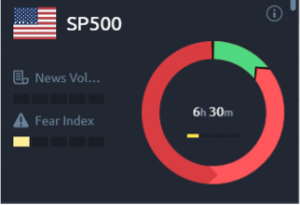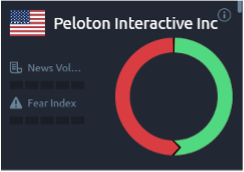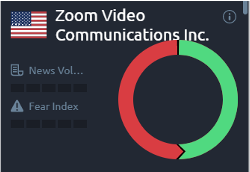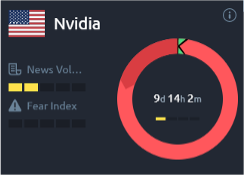Inflation, Omicron, energy crisis, Evergrande default, bond tapering and tensions between the US and China. These grabbed the headlines in 2021. Even in the face of such uncertainties, markets showed great resilience, and 2021 was overall a terrific year for stocks. The three benchmark US indices, Dow Jones, Nasdaq, and S&P 500, all climbed around 20%.
The Darlings of Wall Street
From the pandemic lows of March 2020, many stocks spiked more than 100%. Among these market darlings were exercise equipment maker Peloton, video conferencing software maker Zoom, and AI lending platform Upstart, which recorded gains of 443%, 163%, and 615%, respectively. Investors flocked to such stocks in sectors that benefited from the covid-induced restrictions, driven by easy monetary policy and a dearth of alternative sources of return. However, while some stocks entered December 2021 with lofty valuations, certain equities that had experienced hypergrowth last year saw a reversal in fortunes. This was driven mostly by analyst reports that called into question the ability of actual corporate earnings to justify these high valuations. Could such reversal continue into 2022?
Technical analysts at Bank of America expect a 20% market contraction in 2022. Dubbed “the year of the stock picker” by Morgan Stanley’s Chief Equity Strategist Mike Wilson, the markets in 2022 may continue corrective trends for stocks that have spiked since the onset of the pandemic. This can also be seen from the overly negative sentiment reflected on by the Acuity Trading Dashboard.
To really understand which hypergrowth stocks could begin running out of steam and present shorting opportunities, we need to look at the reasons that propelled each of these stocks. Here’s a look at some of them.
Drivers of the Rally
Peloton, Zoom, and Nvidia benefited from the shift in customer behaviour caused by the pandemic. Lockdown measures led to gym closures, prompting people to purchase Peloton’s home exercise equipment. However, revenues dwindled when gyms gradually reopened. In fact, the company slashed its annual revenue guidance by $1 billion during its Q3 earnings release.
In a similar vein, Zoom benefited from large enterprises facilitating remote teams. While the trend continues, behemoths like Google and Microsoft showed great agility in enhancing their offerings. And, they had the advantage of a strong ecosystem (emails, calendar, documents, presentations) that could be seamlessly integrated with video call scheduling. Stiff competition from companies that have just way too much muscle led to Zoom struggling to meet its customer acquisition targets.
Nvidia had different problems. It found itself in the middle of global semiconductor chip shortage. The shortage persists, and Nvidia’s problem is not dry order books, rather un-serviced potential customers.
For shorting opportunities, we should look at further developments in the individual landscapes for these companies.
A Different Breed of Traders
The appreciation in some stocks was completely unexpected, being driven purely by the actions of traders. The most prominent were the Reddit fuelled GameStop and AMC Entertainment short squeezes as well as the rise of meme stocks and some cryptos. What we must keep in mind, however, is the influence of retail traders. After all, retail trading grew from representing merely 10% of total equity volume traded pre-pandemic to an incredible 24% by early 2021. Many invested in a manner reminiscent of the Keynesian beauty contest, buying the stock that apps showed were the most popularly bought. These purchases inflated prices and created returns which convinced more investors that these represented the best investment.
Take Tesla, for example. The EV maker had an average year but saw its valuation eclipse traditional carmakers with superior financial performance. Trading in 2021 may just as likely to be prompted by a subreddit or a trending stock list, as by analysts and experts.
On the other hand, many traders who had been active in the volatile market of 2020 have transitioned to longer-term strategies. This could create headwinds for hypergrowth stocks. This trend is evident from the fact that Nasdaq, the bastion of tech stocks, has underperformed the S&P 500 since early March 2021.
Buying Opportunities Remain
Not all hypergrowth stocks are overvalued and some promising options remain in the market. Take the example of DocuSign. Investors overreacted to the company’s Q3 earnings falling short of expectations, sending the stock plummeting about 40%. While growth expectations have been lowered, they remain at a healthy 20%, and the correction in its share price may prove overdone.
Some stocks may not be in the thrilling tech and retail categories but could offer meaningful growth. Traders should keep their eyes open for genetic testing firm Fulgent Genetics, pet supplies firm Chewy, freelance marketplace Fiverr, telehealth pioneer Livongo, and vacation rentals company Airbnb. In the tech space, traders can look at smaller companies like DigitalOcean. Although this company competes with mega-caps like Google, Amazon, and Microsoft, it offers its software in the SaaS model to small and medium enterprises.
Many hypergrowth stocks are trend sensitive due to their high multiples. Economic recovery increases the attractiveness of fresh investment targets, causing price action in hypergrowth stocks. The success of shorting stocks will finally be driven by the risk appetite of investors.
Equities,
Covid



